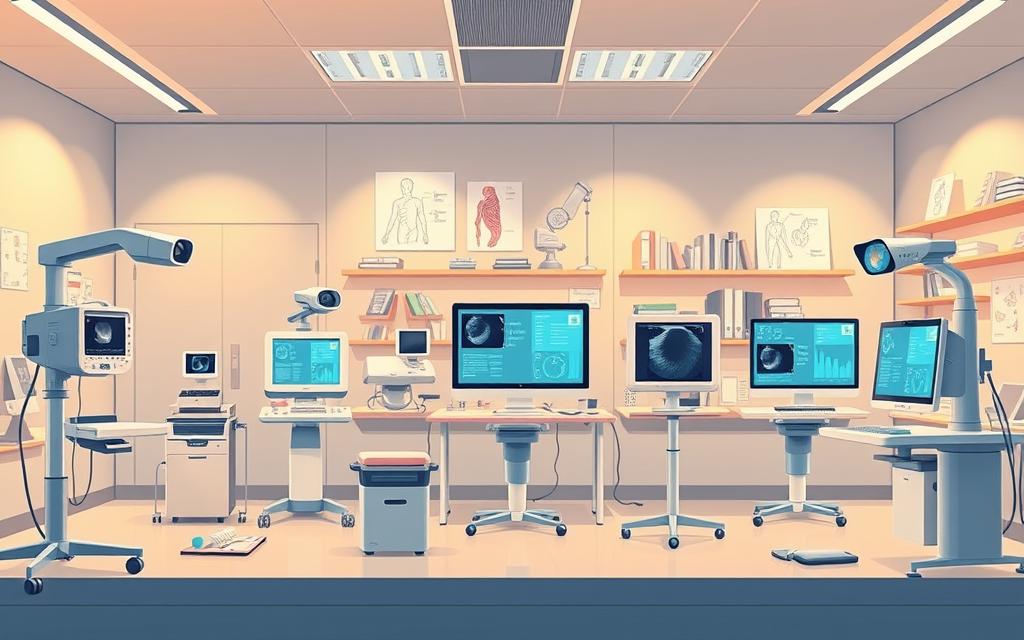Does Finasteride Cause Erectile Dysfunction?
Men taking finasteride for hair loss or prostate issues often wonder about its impact on their sexual health. One concern is whether it leads to erectile dysfunction. This medication is known for its effectiveness, but like all drugs, it comes with potential side effects.
The relationship between finasteride and sexual health is complex. Some men report no issues, while others experience changes in their sexual function. Understanding the potential risks and benefits is crucial for making informed decisions about treatment.
Exploring the connection between erectile dysfunction treatment and finasteride can help clarify the situation. This article aims to provide a comprehensive look at the available information and research findings.
Understanding Finasteride: Purpose and Usage
Finasteride is a versatile drug used in different medical treatments. It is primarily known for its effectiveness in addressing hair loss and benign prostatic hyperplasia (BPH).
What is Finasteride?
Finasteride is a medication that belongs to a class of drugs known as 5-alpha-reductase inhibitors. It works by blocking the conversion of testosterone to dihydrotestosterone (DHT), a hormone involved in the development of BPH and male pattern baldness. By inhibiting this conversion, finasteride helps to reduce the size of the prostate and slow down hair loss.
Common Medical Applications
Finasteride is commonly used for two main medical applications: hair loss treatment and benign prostatic hyperplasia treatment. For hair loss, finasteride is marketed under brand names like Propecia, and it’s known to promote hair growth and prevent further hair loss. For BPH, it’s marketed under brand names like Proscar, and it helps to improve urine flow and reduce the risk of acute urinary retention. According to research, finasteride has been shown to be effective in treating these conditions, as evidenced by studies published in reputable medical journals, such as the one found on PubMed Central.
The benefits of finasteride include:
- Effective in treating male pattern baldness
- Reduces the size of an enlarged prostate
- Improves urinary flow
Overall, finasteride is a significant medication for individuals dealing with hair loss and BPH, offering a dual benefit that improves quality of life.
The Mechanism of Action: How Finasteride Works
Finasteride’s effectiveness in treating hair loss and benign prostatic hyperplasia (BPH) can be attributed to its unique mechanism of action. Finasteride works by inhibiting the conversion of testosterone to dihydrotestosterone (DHT), a potent derivative of testosterone.
DHT Inhibition Process
The DHT inhibition process is central to finasteride’s therapeutic effects. DHT is a hormone that contributes to the development of male pattern baldness and BPH. Finasteride achieves its effect by inhibiting the enzyme 5-alpha-reductase, which is responsible for converting testosterone into DHT. By reducing DHT levels, finasteride helps to slow down hair loss and even stimulate hair regrowth in some cases. It also alleviates symptoms of BPH by reducing the size of the prostate gland.
Hormonal Impact on the Body
The reduction of DHT levels has a significant hormonal impact on the body. Lower DHT levels can lead to a decrease in the rate of hair loss and an improvement in BPH symptoms. However, it’s also important to consider the broader hormonal context. Finasteride’s influence on the hormonal balance can have various effects, and understanding these is crucial for appreciating the drug’s overall impact.
| Hormone | Effect of Finasteride | Clinical Implication |
|---|---|---|
| DHT | Reduced levels | Slows hair loss, alleviates BPH symptoms |
| Testosterone | Conversion to DHT inhibited | Increased levels of testosterone |
By understanding the mechanism through which finasteride works, individuals can better appreciate its potential benefits and risks. The drug’s impact on hormonal balance is a critical aspect of its overall effect on the body.
Does Finasteride Cause Erectile Dysfunction? The Evidence
Clinical evidence regarding finasteride’s impact on erectile function has been accumulating. The concern that finasteride might cause erectile dysfunction (ED) has prompted numerous clinical studies and research investigations.
Clinical Studies and Research Findings
Several clinical studies have explored the relationship between finasteride use and the incidence of erectile dysfunction. A notable study published in the Journal of Clinical Endocrinology and Metabolism found that finasteride users reported a higher incidence of ED compared to non-users. The study highlighted the need for further research into the potential sexual side effects of finasteride.
Another research finding from the Prostate Cancer and Prostatic Diseases journal indicated that the risk of developing ED was significantly higher in patients treated with finasteride for benign prostatic hyperplasia (BPH). These findings underscore the importance of weighing the benefits of finasteride against its potential risks.

Statistical Analysis of ED Reports
A statistical analysis of ED reports among finasteride users reveals a varied picture. According to data from the FDA Adverse Event Reporting System (FAERS), there is a notable number of reports associating finasteride with erectile dysfunction. The analysis of these reports suggests that while the overall incidence may be relatively low, it is still a significant concern for some users.
- A meta-analysis of clinical trials showed that the incidence of ED in finasteride-treated patients ranged from 2% to 15%.
- The variability in reported rates may be due to differences in study populations, dosages, and durations of finasteride treatment.
- Some studies suggest that the risk of ED may be higher in the initial stages of treatment and may decrease over time.
Understanding the statistical analysis of ED reports is crucial for both healthcare providers and patients. It helps in making informed decisions about the use of finasteride, especially for those who are concerned about its potential impact on sexual function.
The Prevalence of Sexual Side Effects
The prevalence of sexual side effects among finasteride users has been a topic of considerable debate. Finasteride, commonly prescribed for male pattern baldness and benign prostatic hyperplasia, has been associated with various sexual health issues.
Reported Rates of Erectile Dysfunction
Studies have reported varying rates of erectile dysfunction (ED) among finasteride users. Some research indicates that the incidence of ED in men taking finasteride for hair loss is relatively low, affecting about 1-2% of users. However, other studies suggest that the rate could be higher, potentially impacting up to 5-6% of men on the medication.
The discrepancy in reported rates may be due to differences in study populations, dosages, and durations of finasteride treatment. It’s essential to consider these factors when assessing the risk of developing ED while on finasteride.
Other Sexual Side Effects Associated with Finasteride
In addition to erectile dysfunction, finasteride has been linked to other sexual side effects. These include decreased libido, ejaculation disorders, and in some cases, sexual dysfunction that persists even after discontinuing the medication.
Common sexual side effects reported by finasteride users:
- Decreased libido
- Erectile dysfunction
- Ejaculation disorders
- Persistent sexual dysfunction
Understanding the full spectrum of potential sexual side effects is crucial for men considering or already taking finasteride. It’s recommended that individuals discuss their specific risks and any concerns with their healthcare provider.
Risk Factors: Who’s More Susceptible?
Certain individuals may be more prone to finasteride’s side effects due to various risk factors. Understanding these factors can help patients and healthcare providers make informed decisions about treatment.
Age and Existing Health Conditions
Age is a significant factor in determining the risk of experiencing finasteride’s side effects. Older adults may be more susceptible due to decreased physical reserves and the presence of comorbid conditions. Existing health conditions, such as diabetes and cardiovascular disease, can also increase the risk of adverse effects. A study published in the National Center for Biotechnology Information highlights the importance of considering these factors when prescribing finasteride.
The table below summarizes the potential risk factors associated with finasteride use:
| Risk Factor | Description | Impact |
|---|---|---|
| Age | Older adults | Increased risk of side effects |
| Existing Health Conditions | Diabetes, cardiovascular disease | Higher susceptibility to adverse effects |
| Dosage | Higher doses | Increased risk of side effects |
Dosage and Duration Considerations
The dosage and duration of finasteride treatment can also impact the risk of experiencing side effects. Higher doses and longer treatment durations are associated with a higher risk of adverse effects. Patients should be monitored closely, and treatment plans should be adjusted accordingly.
By understanding these risk factors, healthcare providers can better counsel patients on the potential benefits and risks of finasteride treatment.
Post-Finasteride Syndrome: Understanding Long-term Effects
Research into post-finasteride syndrome has shed light on the potential long-term effects of finasteride, including persistent sexual dysfunction in some individuals. This condition has raised concerns among healthcare professionals and patients alike, necessitating a closer examination of its causes and implications.
Defining Post-Finasteride Syndrome
Post-finasteride syndrome refers to a constellation of symptoms, primarily sexual in nature, that persist even after the discontinuation of finasteride. These symptoms can include erectile dysfunction, decreased libido, and penile atrophy. The exact mechanisms behind this syndrome are not fully understood, but it is believed to involve hormonal imbalances, particularly related to dihydrotestosterone (DHT) and testosterone levels.
Research on Persistent Sexual Dysfunction
Studies have shown that a subset of individuals taking finasteride experience persistent sexual dysfunction, even after they stop using the medication. Research is ongoing to understand the factors that contribute to this condition, including genetic predispositions, dosage, and duration of finasteride treatment. Understanding these factors is crucial for developing effective treatment strategies for post-finasteride syndrome.
The prevalence of post-finasteride syndrome and its impact on quality of life underscore the need for informed decision-making regarding finasteride use. Patients should be aware of the potential risks and benefits, and healthcare providers should closely monitor patients for any adverse effects.
Psychological vs. Physiological Factors
Understanding the interplay between psychological and physiological factors is crucial when examining finasteride’s side effects. The experience of erectile dysfunction among finasteride users can be influenced by both mental and physical aspects.
The Nocebo Effect in Finasteride Users
The nocebo effect, a phenomenon where negative expectations cause adverse outcomes, can play a significant role in the experience of side effects among finasteride users. If a patient is aware of the potential for erectile dysfunction, they may be more likely to experience it due to the power of suggestion.
Separating Mental and Physical Causes
Distinguishing between psychological and physiological causes of erectile dysfunction in finasteride users is challenging. Research suggests that both factors contribute to the condition. A comprehensive analysis is necessary to understand the underlying causes.
| Factor | Psychological Influence | Physiological Influence |
|---|---|---|
| Nocebo Effect | High | Low |
| Hormonal Changes | Low | High |
| Stress and Anxiety | High | Moderate |
By understanding the complex interplay between psychological and physiological factors, healthcare providers can better manage and treat finasteride-related erectile dysfunction.
Managing and Treating Finasteride-Related ED
Managing erectile dysfunction caused by finasteride requires a comprehensive approach that includes both medical treatments and adjustments to daily habits. Individuals experiencing ED while on finasteride should consider a multi-faceted strategy to address their condition effectively.
Medical Interventions
Several medical interventions can help alleviate erectile dysfunction associated with finasteride use. These include:
- Phosphodiesterase inhibitors like sildenafil (Viagra) and tadalafil (Cialis), which are commonly prescribed for ED.
- Hormone therapy to balance hormonal levels that may be affected by finasteride.
- Vacuum erection devices as a non-invasive alternative.
Lifestyle Modifications
In addition to medical treatments, certain lifestyle changes can significantly impact erectile dysfunction. These modifications include:
- Increasing physical activity through regular exercise to improve cardiovascular health.
- Dietary adjustments to include foods that are beneficial for erectile health, such as those rich in antioxidants and omega-3 fatty acids.
- Reducing stress through techniques like meditation or yoga.
It’s crucial to consult a healthcare provider if erectile dysfunction persists or worsens. They can provide guidance on the best course of treatment and help manage any underlying conditions that may be contributing to ED.
| Treatment Option | Description | Benefits |
|---|---|---|
| Phosphodiesterase inhibitors | Medications like sildenafil and tadalafil | Effective in treating ED, easy to use |
| Hormone therapy | Treatment to balance hormonal levels | Addresses hormonal imbalances, can improve ED |
| Vacuum erection devices | Non-invasive devices to aid erection | Non-pharmacological, suitable for various ED causes |
Alternative Treatments for Hair Loss and BPH
Exploring alternative treatments for hair loss and benign prostatic hyperplasia (BPH) reveals a range of options beyond finasteride. These alternatives cater to individuals who may experience side effects or prefer different approaches to managing their conditions.
Non-Finasteride Medications
For hair loss, minoxidil is a well-known topical treatment that stimulates hair growth. Another option is dutasteride, which, like finasteride, inhibits dihydrotestosterone (DHT) but is not FDA-approved for hair loss. In the context of BPH, medications such as alpha-blockers and phosphodiesterase-5 inhibitors can help alleviate symptoms.
| Condition | Medication | Mechanism |
|---|---|---|
| Hair Loss | Minoxidil | Stimulates hair growth |
| BPH | Alpha-blockers | Relaxes prostate muscles |
| BPH | Phosphodiesterase-5 inhibitors | Relaxes smooth muscle |
Natural and Surgical Alternatives
Natural alternatives for hair loss include saw palmetto and biotin supplements, which are believed to promote hair growth. For BPH, lifestyle modifications and dietary changes can be beneficial. Surgical options like transurethral resection of the prostate (TURP) are considered for severe BPH cases.

These alternatives provide a broader range of choices for individuals dealing with hair loss and BPH, allowing for more personalized treatment plans.
Conclusion: Weighing the Benefits and Risks
Finasteride is a widely used medication for treating hair loss and benign prostatic hyperplasia (BPH). While it offers several benefits, including reducing hair loss and alleviating urinary symptoms, there are potential risks associated with its use, particularly concerning erectile dysfunction.
The benefits of finasteride include its effectiveness in treating male pattern baldness and BPH symptoms. However, the risks of finasteride, such as erectile dysfunction, cannot be overlooked. Studies have shown that a small percentage of users may experience sexual side effects, including erectile dysfunction.
To make an informed decision about using finasteride, it’s essential to weigh its benefits against its potential risks. If you’re experiencing erectile dysfunction or other sexual side effects while taking finasteride, consult your healthcare provider to discuss alternative treatments or adjustments to your medication regimen.
Ultimately, understanding the potential effects of finasteride on your body will help you make a decision that aligns with your health needs and priorities.
